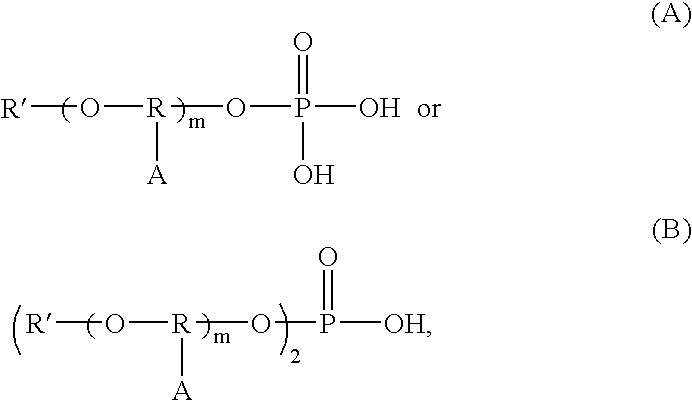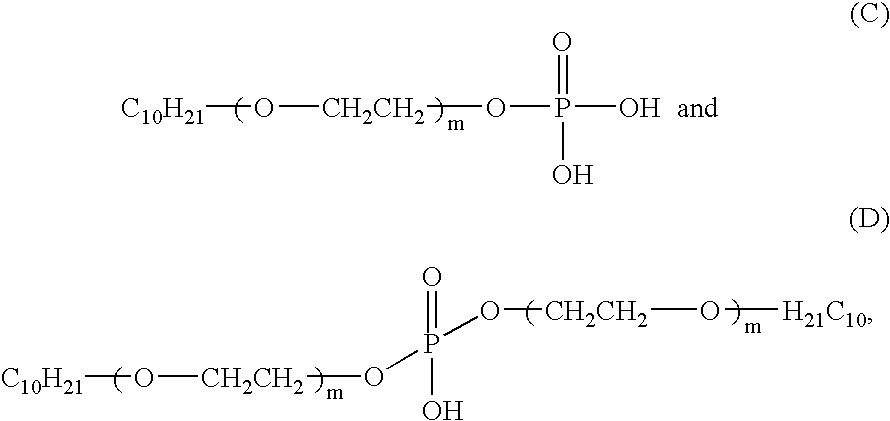Lignocellulosic composite material and method for preparing the same
a technology of lignocellulosic and composite materials, which is applied in the field of lignocellulosic composite materials and a method for preparing the same, can solve the problems of high cost, difficult processing, and generally less acceptable environmental conditions for utilizing toluoylene diisocyanate, and achieve the effect of improving the stability and storage life of the binder resin
- Summary
- Abstract
- Description
- Claims
- Application Information
AI Technical Summary
Benefits of technology
Problems solved by technology
Method used
Image
Examples
examples
[0046] The following examples describe the formation of a lignocellulosic composite material by adding and reacting the following parts listed by weight, unless otherwise indicated. Table 1 illustrates the formation of the first component from various different alcohols.
TABLE 1Formation of First Component of Release AgentExam-Exam-ComparativeComparativeple 1Example 2ple 3Example 1Example 2Phosphorus24.522.319.9NA12.1PentaoxideAlcohol A75.5——NA—Alcohol B—77.7—NA—Alcohol C——80.1NA—Alcohol D———NA87.9
[0047] In Example 1, alcohol A is LUTENSOL® XP30, an alkoxylate based on the C10 Guerbet alcohol, commercially available from BASF Corporation, having a molecular weight of about 273. The alcohol A was reacted with the phosphorus pentoxide to form a phosphoric acid ester, which is a mixture of mono and di-acid phosphate as follows: 500 g of alcohol A was heated to 60° C. in a 4-necked 1-liter round-bottomed flask equipped with high-speed shearer, heating mantle and mechanical stirrer. Nex...
PUM
| Property | Measurement | Unit |
|---|---|---|
| viscosity | aaaaa | aaaaa |
| viscosity | aaaaa | aaaaa |
| viscosity | aaaaa | aaaaa |
Abstract
Description
Claims
Application Information
 Login to View More
Login to View More - R&D
- Intellectual Property
- Life Sciences
- Materials
- Tech Scout
- Unparalleled Data Quality
- Higher Quality Content
- 60% Fewer Hallucinations
Browse by: Latest US Patents, China's latest patents, Technical Efficacy Thesaurus, Application Domain, Technology Topic, Popular Technical Reports.
© 2025 PatSnap. All rights reserved.Legal|Privacy policy|Modern Slavery Act Transparency Statement|Sitemap|About US| Contact US: help@patsnap.com



